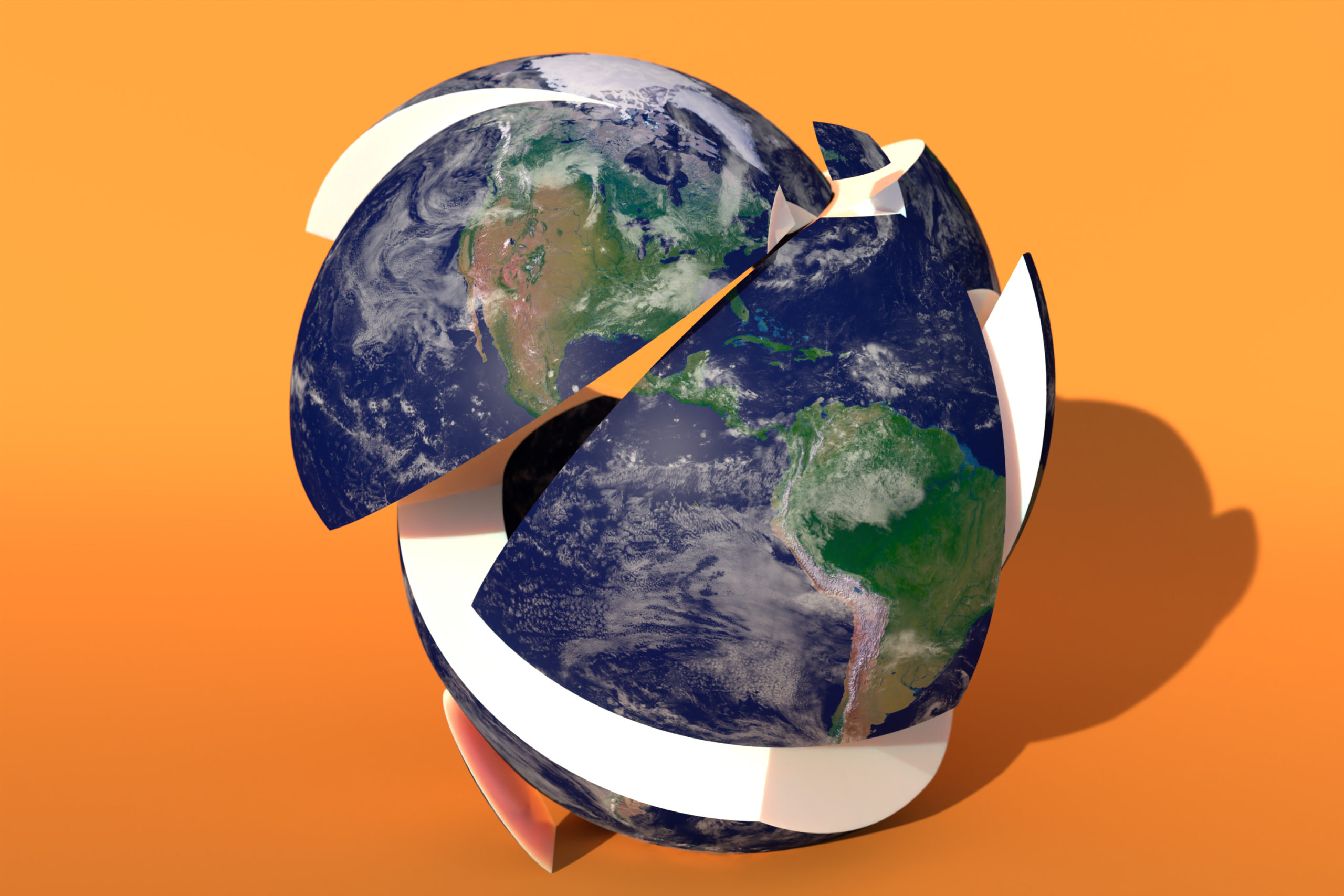Nathan Gardels is the editor-in-chief of Noema Magazine.
While the planet-wide challenges of pandemics and climate change will of necessity drive the world as a whole closer together over time, connectivity, paradoxically, will drive nations and regions apart. Together these divergent forces will shape the geopolitics of the mid to late 21st century.
“Roads have always been the pathways of conquest,” Parag Khanna writes in Noema this week. The countries surrounding China have woken up to this reality and are pushing back against the imperial overreach of its Silk Road revival aimed at building out a new mercantile sphere of influence where all paths lead back to Beijing. Now, he observes, those countries have become a “battlefield of competitive connectivity.”
“A wide array of initiatives have emerged as a direct response to China’s Belt and Road to undermine and dilute China’s infrastructural prowess: the U.S. International Finance and Development Corporation, the EU’s ‘Asia Connectivity Initiative,’ the EU-Japan ‘Partnership on Sustainable Connectivity and Quality Infrastructure,’ the U.S.-Japan-Australia ‘Blue Dot Network,’ the India-Japan ‘connectivity corridors’ and myriad other coalitions,” he writes.
“None of these existed even three years ago,” he continues. “It has also taken just three years for China to go through the whole imperial lifecycle, from economic preponderance and strategic entrapment to widespread resentment and outright rejection.”
While no country wants to be a pawn again in a new Cold War, Khanna believes that the West can contribute to a strategic equilibrium in Eurasia through “a comprehensive strategy for reassuring China’s neighbors and supporting their own efforts to stand up to it. More than any other measure, this could decisively shape China’s trajectory in the decade ahead.”
Digital infrastructure is also a battlefield of competitive connectivity. This issue was already on the table at the Berggruen Institute’s 21st Century Council meeting in Guangzhou last December. In my closing remarks at that conference, I noted that the central project of modern China, and in particular President Xi Jinping’s “rejuvenation,” is to never again fall behind the West in technological achievement, as it did in the 19th and early 20th centuries, which invited imperial domination.
Yet, today’s digital technologies, especially artificial intelligence, are not just another factor of production like machine tools. They are about the use of data and the control of information and free expression. Though the West is itself engaged in an internal debate over privacy and surveillance capitalism, there is nonetheless a sharp political and cultural divergence over core values between East and West.
The flashpoints of this clash are piling up. Not least is the latest: Beijing’s ominous imposition of “one country, one system” in Hong Kong through its new national security law. Requests under the new law to hand over user information that could be utilized to repress the citizen movements for greater democracy has already prompted Facebook, Google and Twitter to withdraw their previous cooperation with the authorities in that former colony and consider leaving altogether.
Following Beijing’s move in Hong Kong, the U.K. this week joined the U.S. in banning the use of Huawei 5G technology in future networks out of concerns over security.
Judging by the ever-more nationalistic rhetoric from China’s leadership, Taiwan — which has become one of the most participatory democracies in the world, where half the population joins an annual on-line “Presidential Hackathon” that sets the governing agenda — is next in the crosshairs. One can hardly imagine the conflagration that would result from Beijing’s attempt to bring the island’s engaged population to heel.
Asia is not the only place where competitive connectivity is shaping the geopolitics of the future. In Europe, the crosshairs are aimed at the market dominance of American Big Tech nurtured by the laissez-faire ways at home. Margarethe Vestager, the EU competition commissioner, lays out her admirably clearsighted views in a fascinating interview this week with Foreign Policy magazine.
If anything, the accelerated connectivity of a populace locked down by the COVID crisis has exposed where American and European approaches part most starkly. “[The pandemic] makes the regulatory approaches that we were considering even more urgent. Because we have now had a crash course, a full-scale experiment, in doing everything digitally: remote working, learning, socializing, even exercising,” says Vestager. “We see all the benefits that come with digital technologies. But the downsides are clearer now too. And that is a huge driver to make sure that a digital world is based on fairness and market access. We are pushing even more strongly now on the things we were already working on. We have ongoing investigations … into Amazon, Google, Facebook and Apple.”
The commissioner underscores her bottom line: “We need to spell out more clearly to big digital gatekeepers that there are explicit do’s and don’ts, and one of the obvious don’ts could be that you cannot promote yourself if you are a digital gatekeeper.” Her concerns also extend to new COVID-related apps. “No matter who develops a virus-tracking app, what is very important is that it comes with an open protocol that third parties can verify — and ensure the app is not doing anything other than what it is said to be doing. And a decentralized system is ideal.”
Foreign Policy has also just released a survey of state surveillance of citizens in 36 countries.
In an interview last year, Kai-Fu Lee, who once headed Google in China and is the author of “AI Superpowers: China, Silicon Valley and the New World Order,” spoke to me of the “parallel universes” emerging in China, the U.S. and Europe, each marking out their own virtual terrain characterized by distinct cultural and political underpinnings fraught with friction where and when they interact.
Competition and conflict over the nature of connectivity, whether trading routes or digital pathways, is the new Great Game. It is both a physical and cyber-shadow of earlier geopolitical rivalries among major powers in history. The more we advance into the future, the more it looks like the past.




